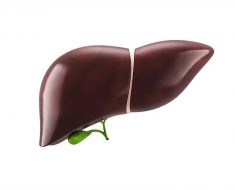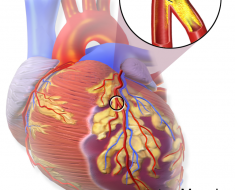Age-related macular degeneration (AMD) affects roughly 200,000 individuals in the United States each year. In most, it comes on slowly, gradually blurring the central field of vision used for activities like reading and driving. While treatments exist to slow its progression, there is no cure.
A team led by Kathleen Boesze-Battaglia of the University of Pennsylvania has now characterized a new animal model that mimics aspects of AMD, in particular in how lipids are handled in the eye. Recapitulating many aspects of the human disease, the model will help researchers probe the environmental risk factors that promote the condition and eventually perhaps help them craft a successful treatment. They reported their findings in Frontiers in Cellular Neuroscience.
“Currently for the most prevalent form of AMD, dry AMD, you can slow it down a little bit, but you can’t really cure it,” says Boesze-Battaglia, professor in the Department of Biochemistry in Penn’s School of Dental Medicine. “And that’s why these models are particularly valuable. They take a defect in a normal physiological process and allow you to find the important regulatory steps. That then allows you to consider how you could therapeutically target those steps.”
A defining characteristic of dry AMD is the accumulation in the eye of what are known as drusen, small lipid-filled deposits. These arise because of a defect in processing the lipid-rich outer segments of the retina’s photoreceptor cells, those that are responsible for vision.
In earlier studies, Boesze-Battaglia and other researchers examined how the retinal pigment epithelium (RPE), the layer of cells that ingest shed outer segments from the photoreceptors, metabolizes lipids.
“This outer segment, the tip of the photoreceptor, it’s like a hamburger without a bun,” says Boesze-Battaglia. “It’s a very lipid-rich sack.”
They found that this digestion process, known as phagocytosis, is accomplished with assistance from a group of proteins in the microtubule-associated protein 1 light chain 3 (LC3) family. After finding a protein that bound to one of these family members, LC3B, the Penn-led group was able to use a mutant mouse lacking LC3B to assess the effects the loss on visual function.
Using non-invasive imaging, they observed that, while younger mice lacking LC3B appeared similar to their normal counterparts, older mice with the mutation had abnormalities in their retinas, indicative of disease and dysfunction.
Focusing on the RPE, they found that this cell layer’s ability to digest the photoreceptors’ outer segments was compromised; the mutant animals were unable to clear the phagocytosed outer segments and produced lower levels of a compound that Boesze-Battaglia and colleagues had previously found to be energy sources for the underlying photoreceptor cells. The slowed digestion process in the mice lacking LC3B also caused lipids to build up in their RPE, blocking the availability and transport of nutrients to photoreceptor cells.
Slowed digestion was also associated with reduced accumulation of protective bioactive lipids necessary to maintain the integrity of the RPE and with an increase in an inflammatory microenvironment with more immune cells congregating around the optic nerve in mutant mice.
“So what you’ve done is make it so that these protective bioactive lipids decrease, rendering the entire retinal tissue unable to maintain its integrity,” says Boesze-Battaglia. “And you’ve created a chronic state of persistent low-level inflammation that recruits immune cells to the retina and literally breaks up the RPE. You end up with vision loss.”
Using a high-resolution vision-imaging test, the researchers confirmed this in the mice without LC3B; their responses to visual stimuli were greatly dampened.
“The most severe results were in mice that were over 20 months old,” Boesze-Battaglia says. “You saw the lipid deposits, increased inflammation, increased immune cell infiltration, increases in inflammatory compounds, and you also saw a loss of function.”
Now armed with a useful animal model, the researchers hope to further investigate both risk factors and possible therapies for AMD. Smoking is one such environmental contributor to an elevated risk for the condition, as is obesity and cardiovascular disease. In addition, the mouse gives the scientists a way to evaluate the therapeutic utility of compounds that enhance the lipid-clearing process.
Source: Read Full Article





